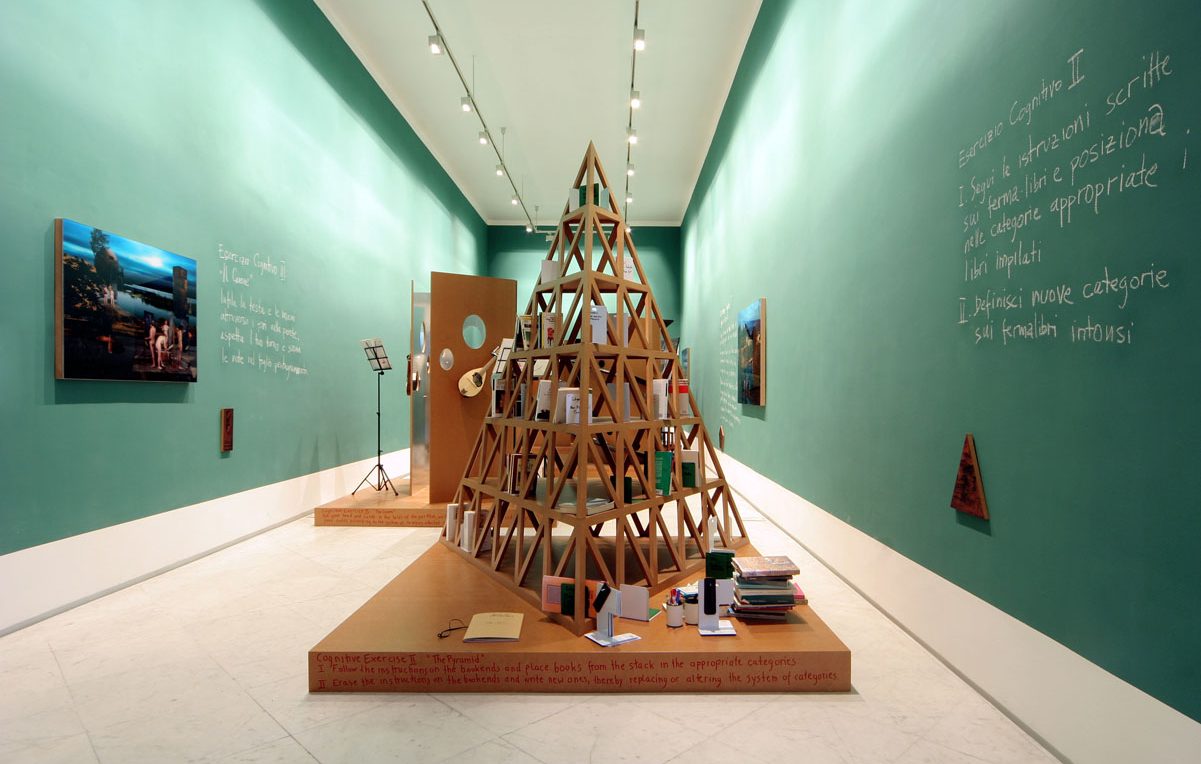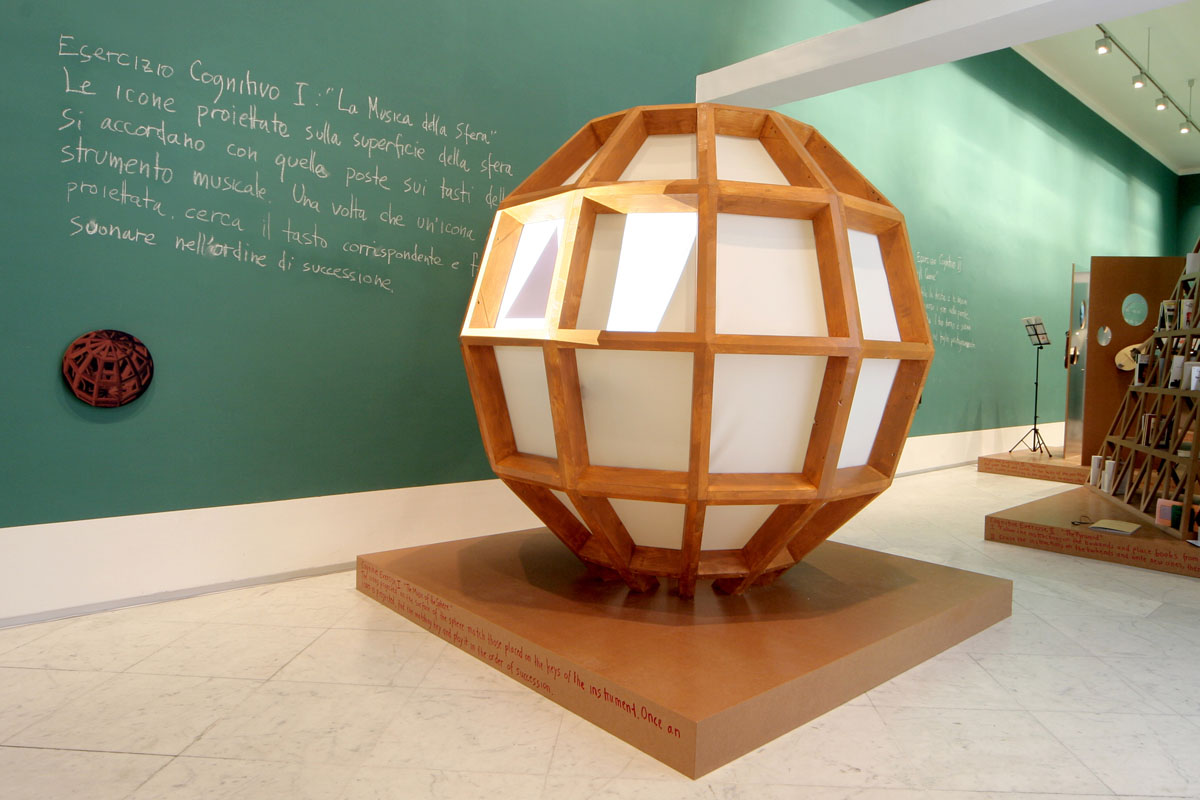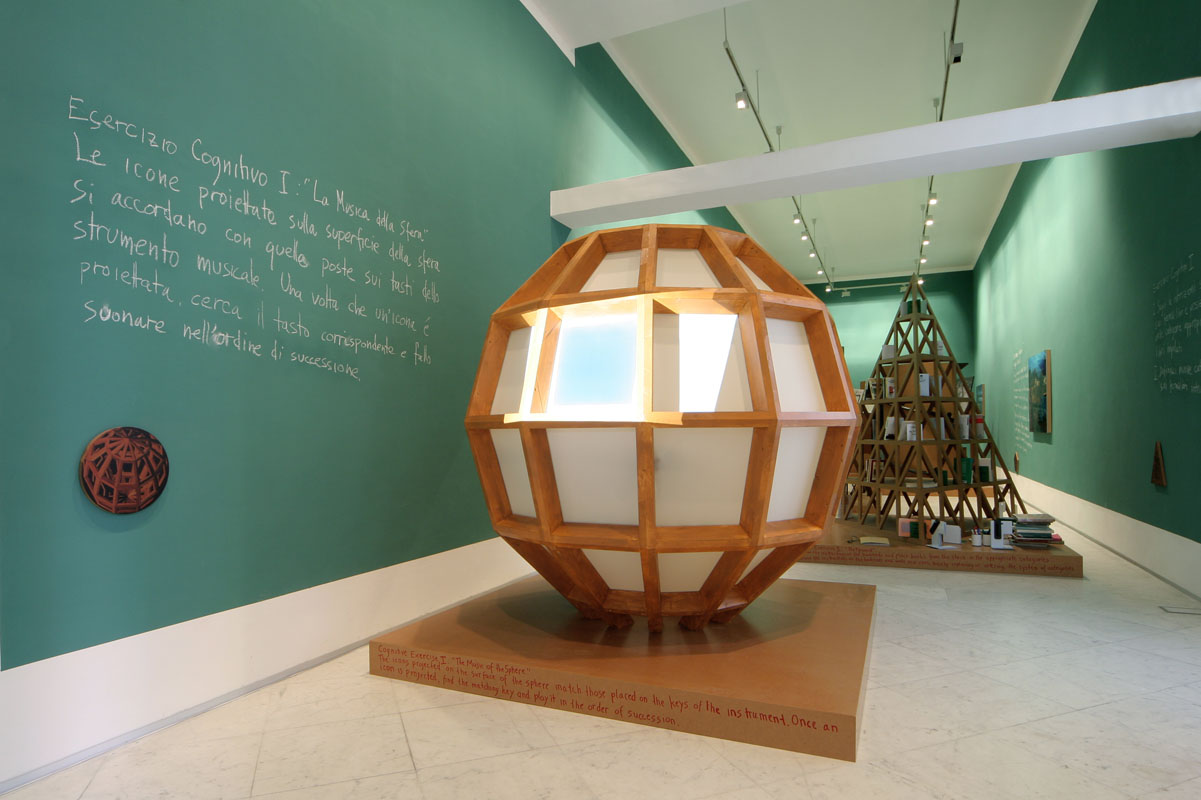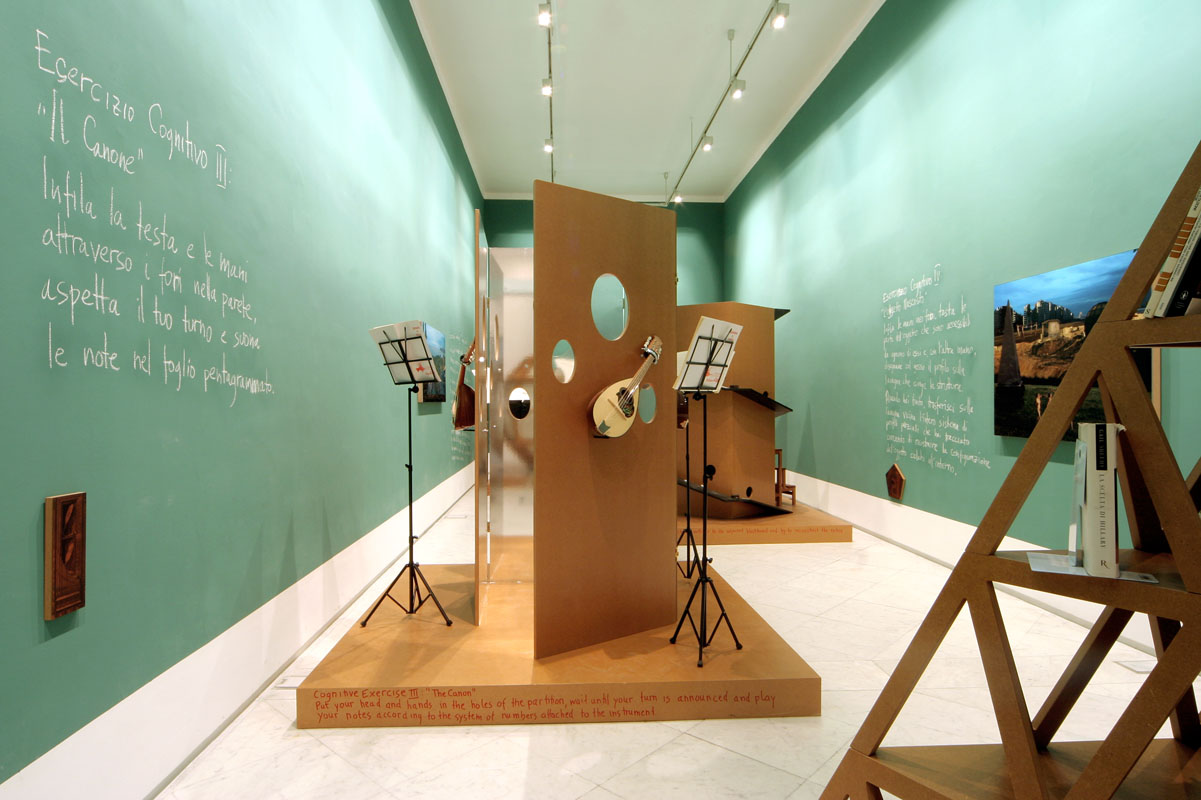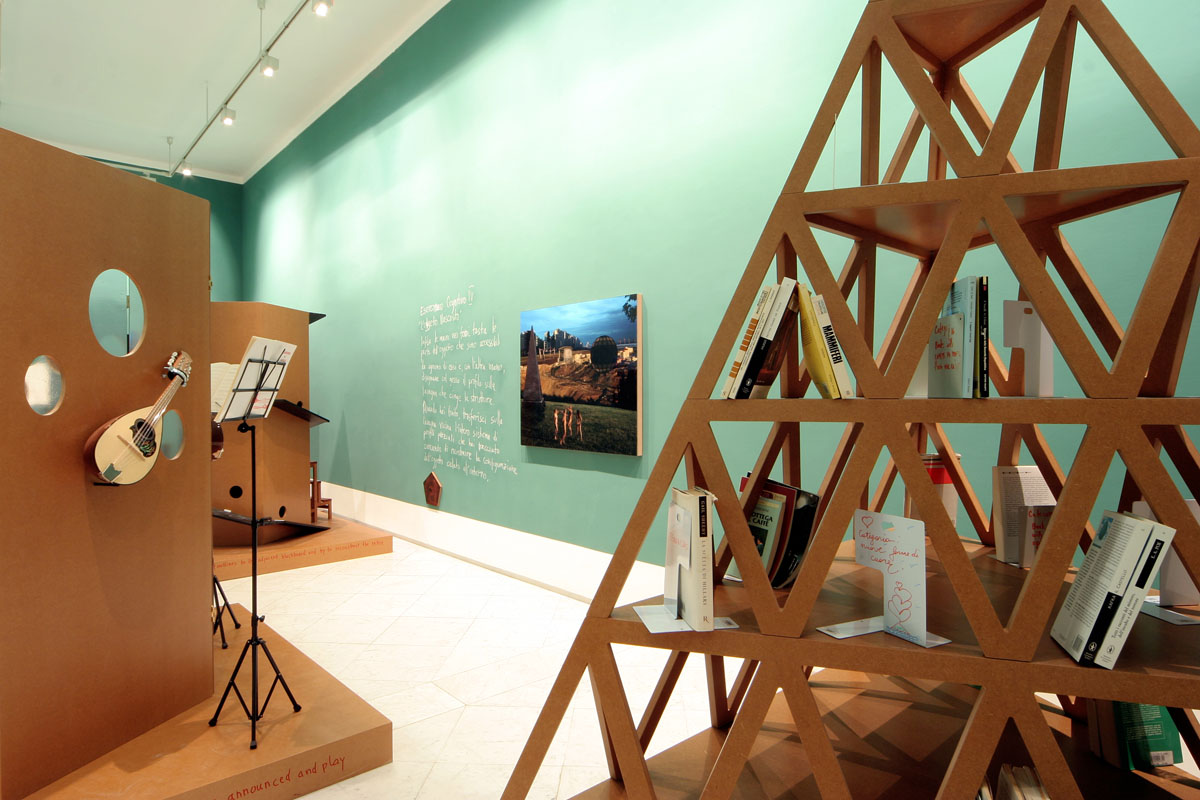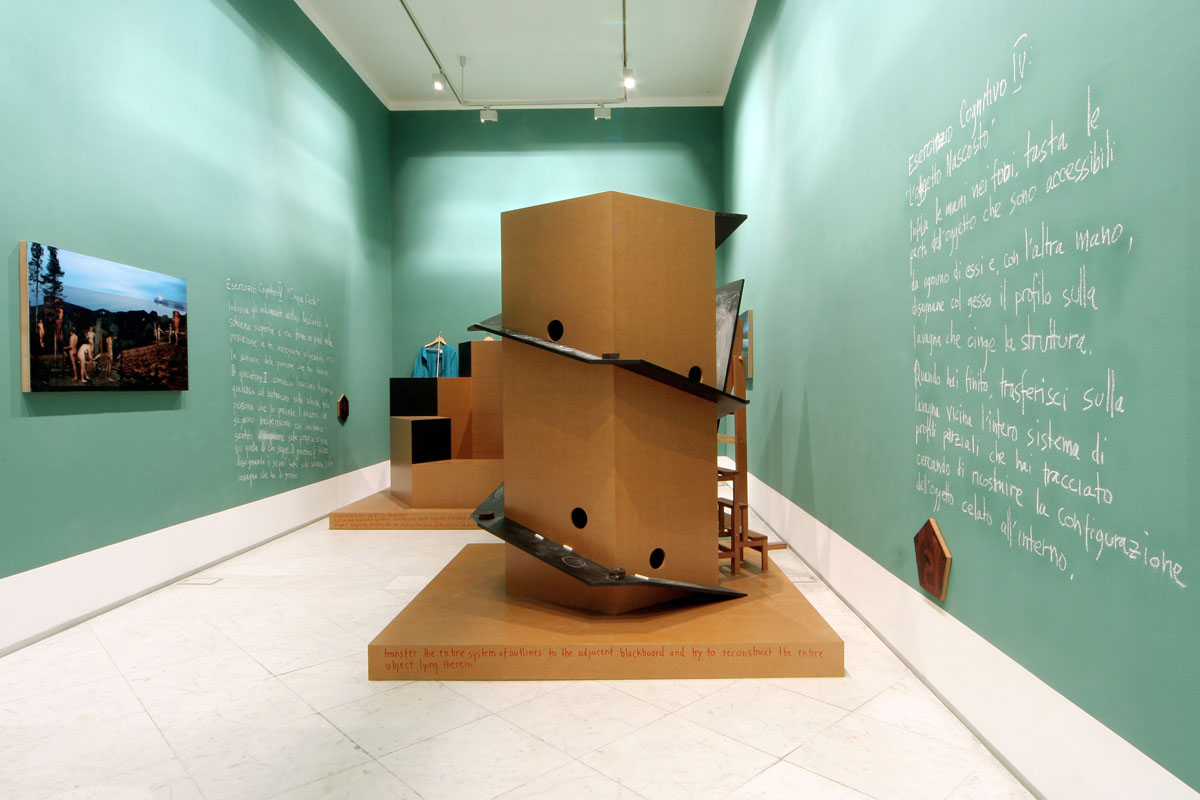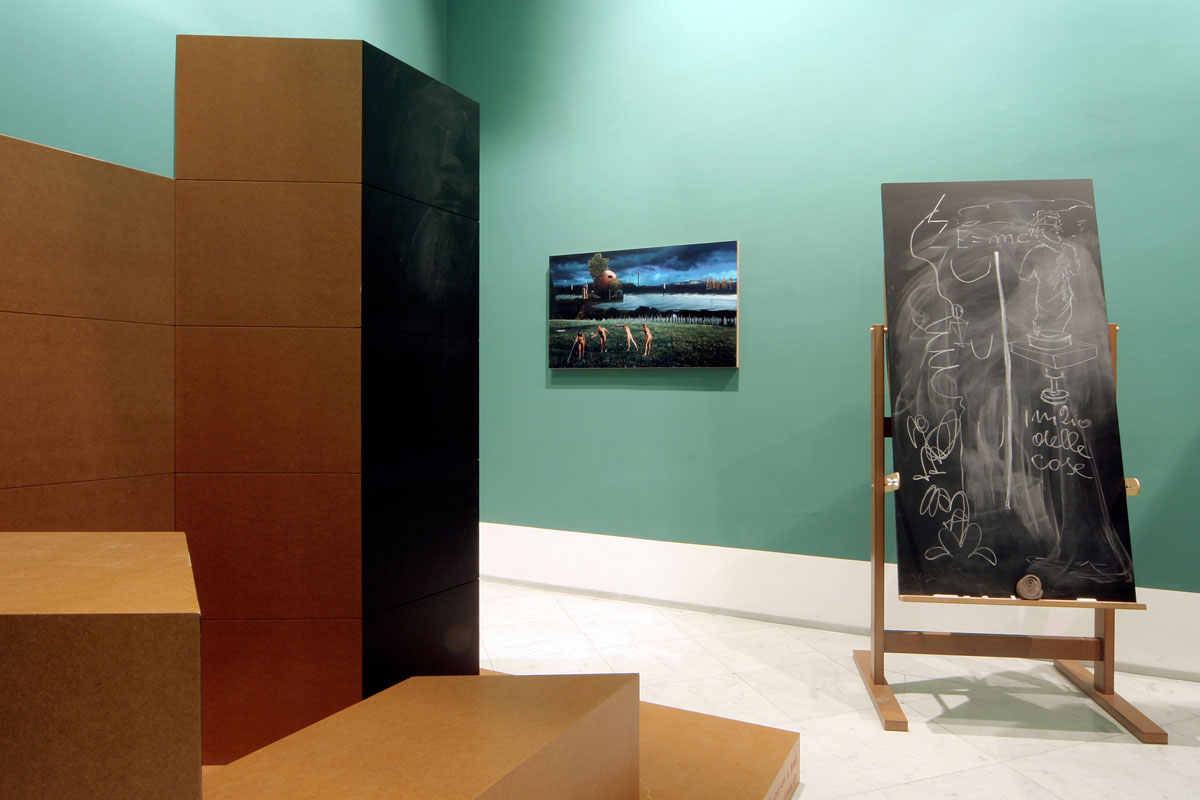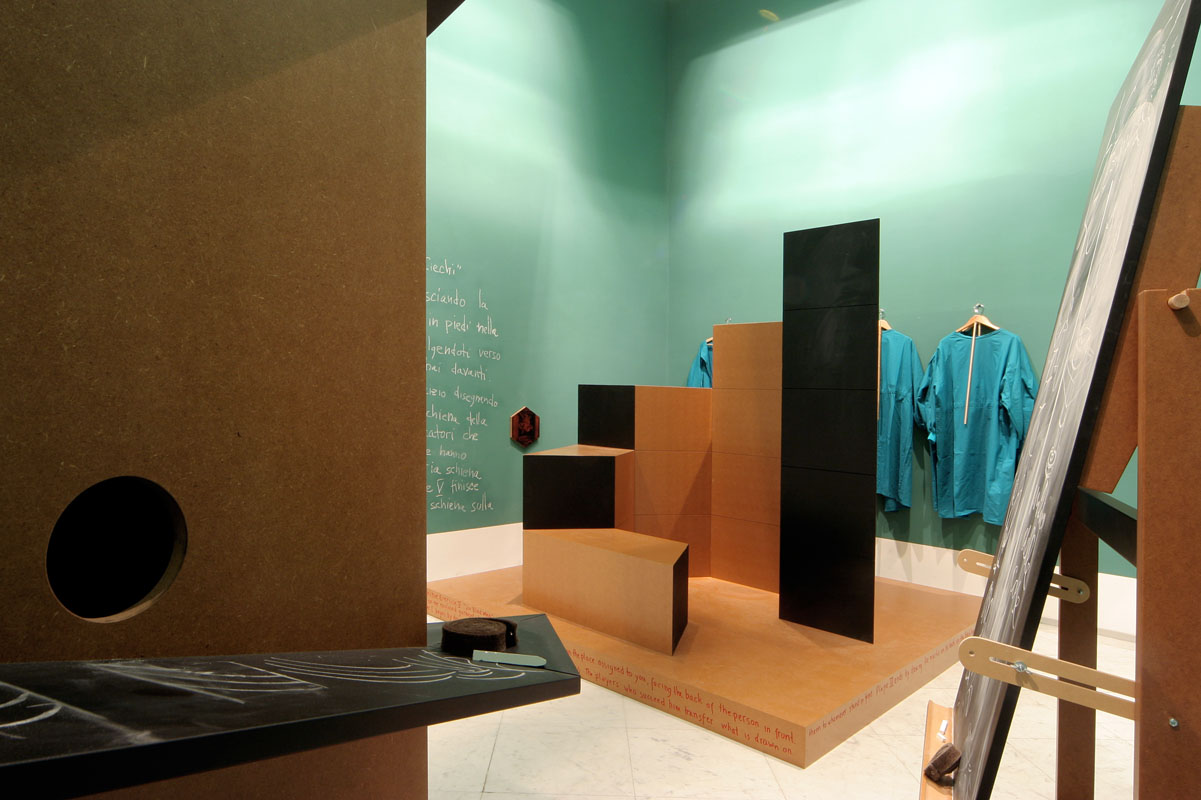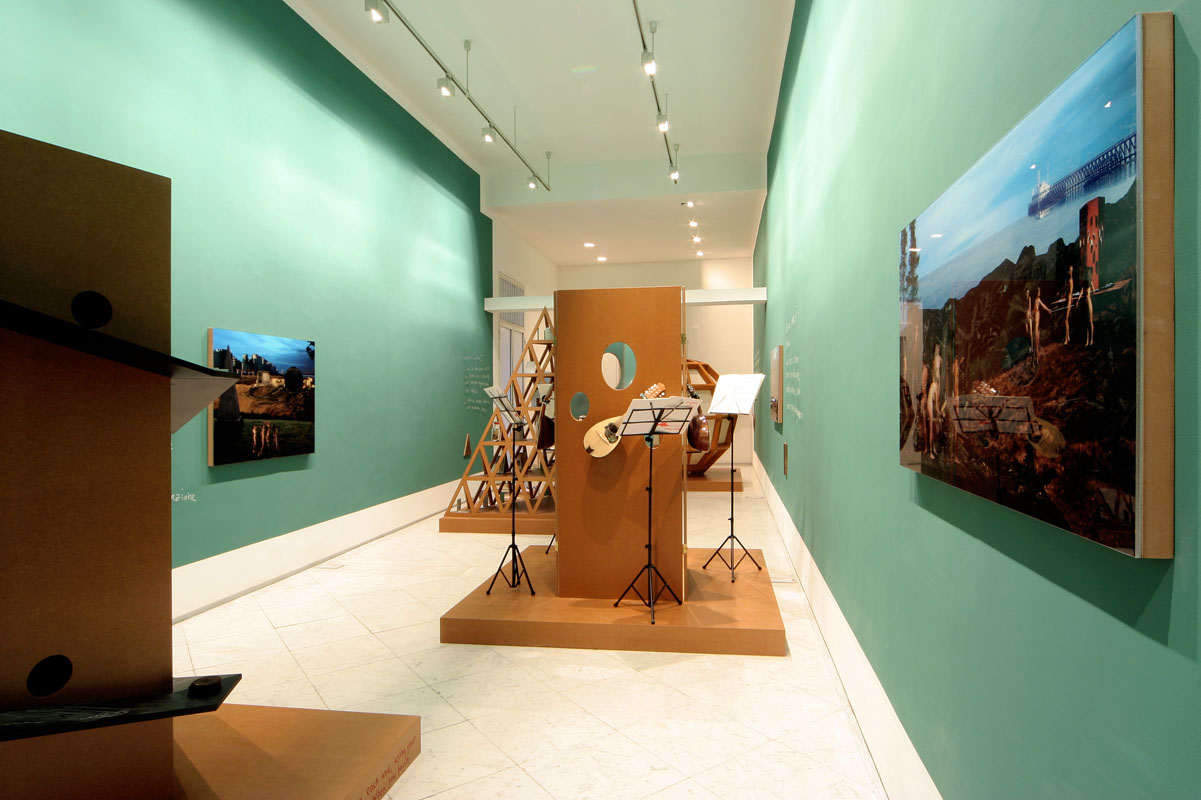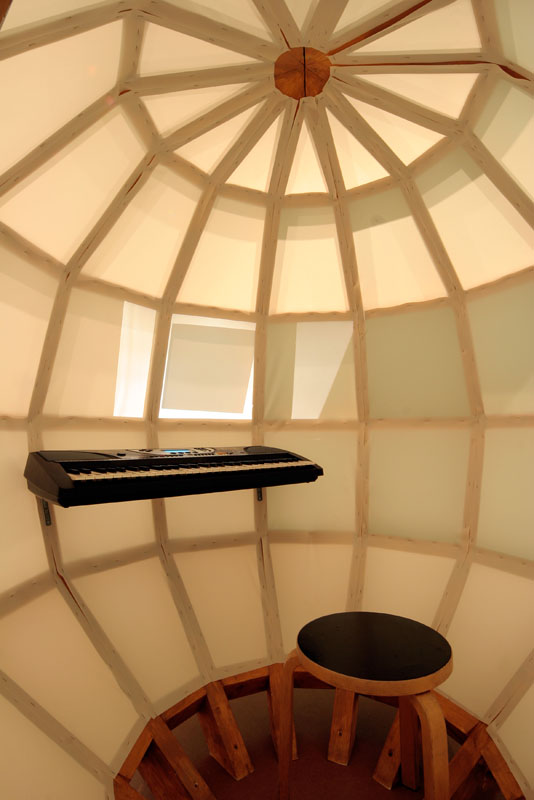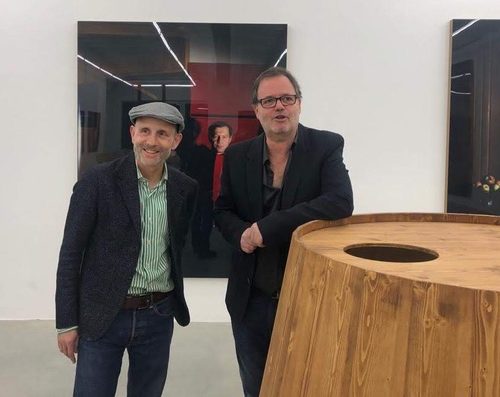Michael Clegg and Martin Guttmann come back to Naples with a new work related to Italian culture and art, commissioned especially for the gallery after the installation “Falsa Prospettiva” presented at the Milan gallery (February 2001) and the solo exhibition in Naples in 1987.
The title of this new project is Themes and elements of a new neapolitan “studiolo”. In the early Renaissance, the aristocratic palace was redesigned to allow a division between the public and private wings. A public sitting room, accessible to visitors, was placed near the entrance, separated from a suite of private rooms located in the back. The “studiolo” was the most private of all spaces; apart from being used as a library, a reading room, a music room and a cabinet of curiosities - the site of a collection of "naturalia", "artificialia", "memorabilia" - it had a more specific function - the studiolo was designed as a cognitive laboratory of sorts, a “total environment” dedicated to the improvement of the memory and imagination.
The aim of the present project of Clegg & Guttmann is to reevaluate the studiolo and suggest ways of transforming it into a contemporary form that combines a variety of functions, where the art objects are not treated merely as collectables but as aspects of an environment dedicated to cognitive and philosophical contemplation. The installation of Clegg & Guttmann was conceived as a direct descendant of the Renaissance studiolo. It is supposed to carry to the present the original preoccupation with memory and imagination. In the contemporary context, the problems can be somewhat different. The attitudes towards memory and imagination have undergone various transformations as was the educational theory that aims to improve them. But the idea of embedding art in a “room for thoughts” or, better still, “room of thought” seems as attractive and suggestive today as it was in the early Renaissance; the work of art should not be treated only as a decorative object but as a part of a comprehensive design that promotes a life of learning and contemplation. The installation contains five separate environments, each organized as a separate cognitive exercise that concerns an aspect of the system of remembering and imagining. The different exercises involve both analytic and synthetic operations - the decomposition of experience to its elements and the construction of new wholes by combining the elements differently. They are concerned with reading, drawing, playing music, etc. Clegg and Guttmann imagine the new Neapolitan studiolo “as an environment where the different aspects of the life of the educated mind will be reflected upon, improved and extended beyond their current possibilities”.
